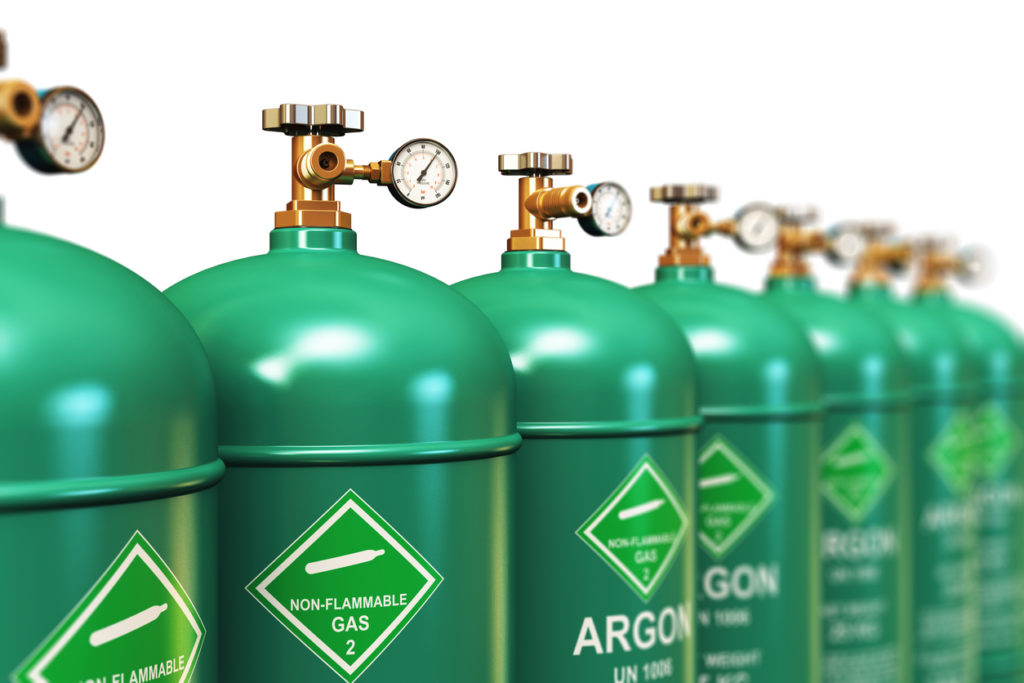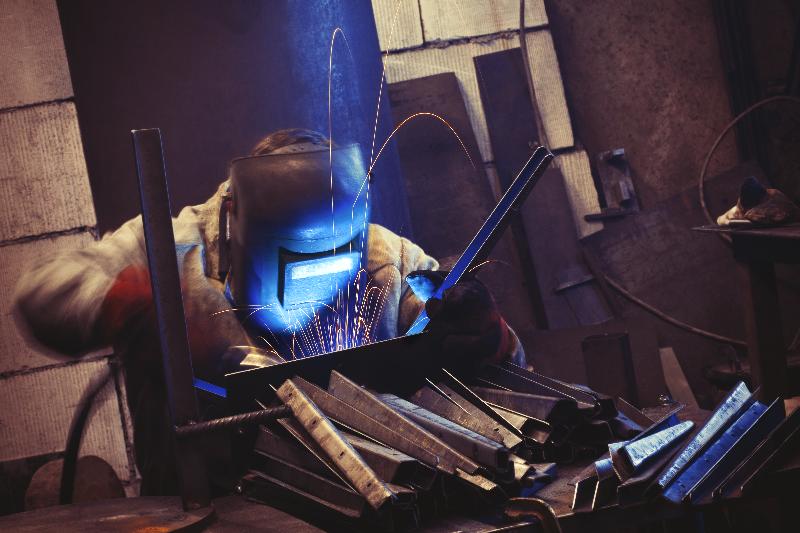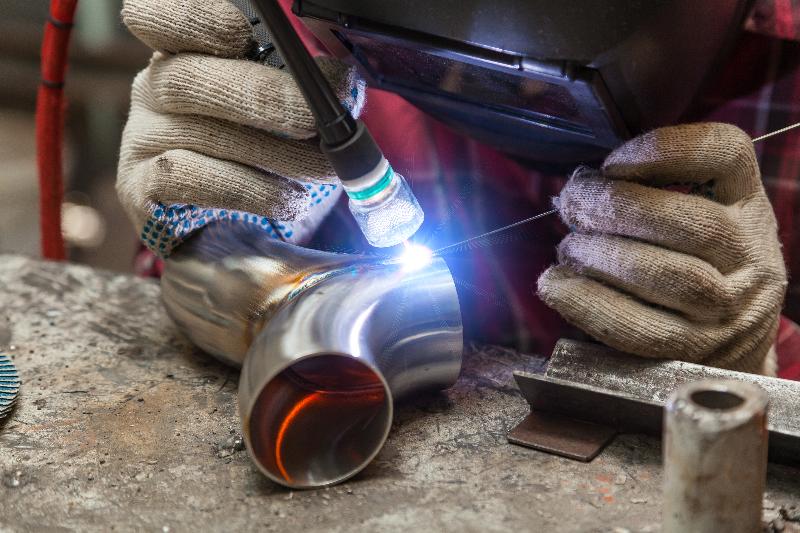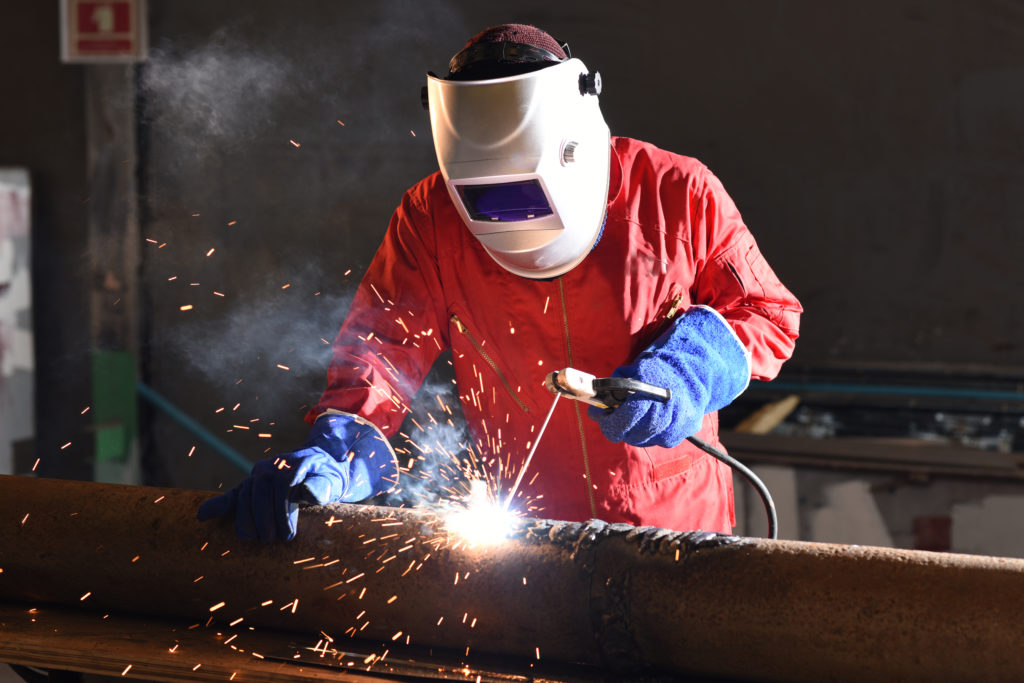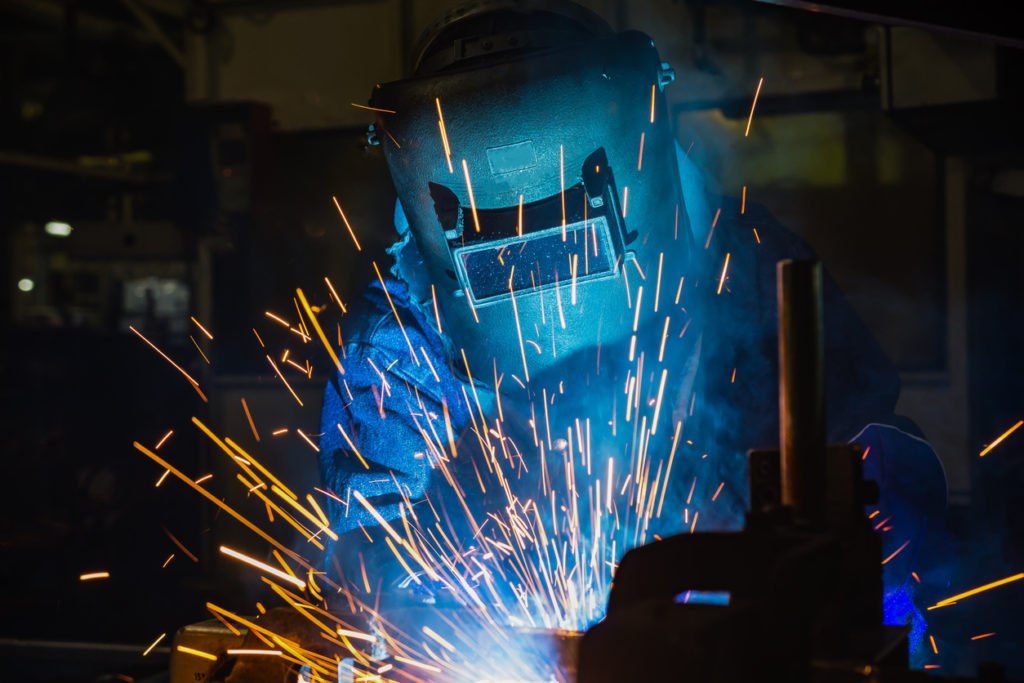choose a product
W10 Locking Clamp: ET2003
MAG-FIX MAGNETIC HOLDER : ET001002
GrabPak - 6013 LOTUS Electrodes (3.2mm) 0.5kg - rutile
GrabPak - 6013 LOTUS Electrodes (2.5mm) 0.5kg - rutile
GrabPak - 6013 LOTUS Electrodes (2.0mm) 0.5kg - rutile
GrabPak - ELIT CUT Electrodes (4.0mm ) 0.5kg - cutting
GrabPak - ELIT CUT Electrodes (3.2mm ) 0.5kg - cutting
GrabPak - 7018 LASERB 47 Electrodes (3.2mm) 0.5kg - low hydrogen
GrabPak - 600 S ELHARD Electrodes (4.0mm) 0.5kg - HARDFACING
GrabPak - 600 S ELHARD Electrodes (3.2mm) 0.5kg - HARDFACING
GrabPak - NiFe-Cl ELNIFER Electrodes (3.2mm) 0.5kg - cast iron
GrabPak - Ni-Cl ELNIKEL Electrodes (3.2mm) 0.5kg - CAST IRON
GrabPak - 312-17 ELOX R Electrodes (2.5mm) 0.5kg - STAINLESS
GrabPak - 308L-17 ELOX R Electrodes (2.5mm) 0.5kg - STAINLESS
GrabPak - 316L-17 ELOX R Electrodes (2.5mm) 0.5kg - STAINLESS
GrabPak - 316L-17 ELOX R Electrodes (2.5mm) 0.5kg - STAINLESS
GrabPak - 308L-17 ELOX R Electrodes (3.2mm) 0.5kg - STAINLESS
GrabPak - 309L-17 ELOX R Electrodes (3.2mm) 0.5kg - STAINLESS
GrabPak - 312-17 ELOX R Electrodes (3.2mm) 0.5kg - STAINLESS
GrabPak - 316L-17 ELOX R Electrodes (3.2mm) 0.5kg
TIG 9 Accessory Kit
TIG 17 Accessory Kit
MIG 360A Accessory Kit
MIG 250A Accessory Kit
MIG 150A Accessory Kit
WH-1 LIGHT REACTIVE WELDING HELMET
SodaStream style unbranded cylinder and Refills
Disposable helium gas for balloons for 10 * 9″ Balloons 0.95L – with filling Nozzle – M10*1RH
Food Grade CO2 E290 disposable gas bottle 220ltr for Hydroponics and Aquarium, 0.95L – M10*1RH
CO2 Disposable Gas Cylinder 580g , E290 Food Grade for sparkling water and Beer, 0.95L - M10*1RH
CO2 Disposable Gas Cylinder 1100g , E290 Food Grade for sparkling water and Beer, 2.2L - M10*1RH
Beer gas disposable cylinder for dispensing highly carbonated Lagers and Cider, 60/40mix. 2.2L - M10-1RH
CO2 gas bottle 220ltr for Air Brush Tattoos Food Grade E290., 2.2L - M10*1RH
Beer gas disposable cylinder for dispensing highly carbonated Lagers and Cider, 60/40 mix - 0.95L - M10*1RH
CO2 gas bottle 580g for Air Brush Tattoos, Food Grade E290 - 0.95L - M10*1RH
CO2 Disposable Gas Cylinder 580g , E290 Food Grade for sparkling water and Beer - 0.95L - M10*1RH
Beer Gas disposable cylinder for a smooth and creamy finish 70/30 mix - 2.2L - M10*1RH
Food Grade CO2 E290 disposable gas bottle 580g for Hydroponics and Aquarium - 0.95L - M10*1RH
Argon gas bottle 0.95L for tig and mig welding disposable cylinder - M10*1RH
CO2 Disposable Gas Cylinder 1100g , E290 Food Grade for sparkling water and Beer - M10*1RH
Argon-Co2 gas bottle 0.95L for mig welding disposable cylinder - M10*1RH
Food Grade CO2 E290 disposable gas bottle 220ltr for Hydroponics and Aquarium, 2.2L - M10*1RH
Disposable helium gas for balloons for 25 9" Balloons 2.2L - with filling Nozzle - M10*1RH
CO2 gas bottle 580g mig welding disposable cylinder 0.95L disposable bottle - M10*1RH
Nitrogen (N2) disposable gas bottle cylinder for Tyre Inflation 0.95L - M10*1RH
CO2 gas bottle 1100g for mig welding disposable cylinder 2.2L disposable bottle - M10*1RH
Nitrogen (N2) disposable gas bottle cylinder for plumbers and air con 0.95L - M10*1RH
Nitrogen (N2) disposable gas bottle cylinder for Tyre Inflation 2.2L - M10*1RH
Nitrogen (N2) disposable gas bottle cylinder for plumbers and air con installers 2.2L - M10*1RH
Argon gas bottle 220ltr for tig and mig welding disposable cylinder - M10*1RH
Argon-Co2 gas bottle 220ltr for mig welding disposable cylinder - M10*1RH
Oxygen / Propylene Cutting and Welding Kit 2 With Gauges
LEISUREGAZ 007
Rent Free, 2% CO2 in Argon Mix 20L, 200Bar for MIG Welding Stainless steel
Rent Free, 12% CO2 in Argon Mix 20L, 200Bar for MIG Welding
Rent Free, 12% CO2 in Argon Mix 50L for MIG Welding
Food Grade Co2 gas cylinders for Coca-Cola Frozen, Fanta Frozen, Tango Ice Blast, and Slushy Jack’s frozen drinks machines – 3.15kg
5KG Gaslight, Propane BBQ & Patio Gas light weight gas refill
10KG Gaslight, Propane BBQ & Patio Gas light weight gas refill
14KG Gaslight, Fiberglass Forklift Gas Refill
Co2 gas cylinders for Confetti Cannons and Blasters 15kg
Food Grade Co2 gas cylinders for Confetti Cannons and Blasters – 34kg
CO2 For Air Brush Tattoos, 1.5kg
CO2 for Air Brush Tattoos, 3.15kg
CO2 For Air Brush Tattoos, 6.35kg
CO2 For Aquarium Plant Growth, 6.35kg
CO2 For Aquarium Plant Growth, 1.5kg
CO2 for Aquarium Plant Growth, 3.15kg
Carbon Dioxide for Stage and Theatrical Special Effects 6.35kg - With Dip Tube / Siphon Tube
Carbon Dioxide for Stage and Theatrical Special Effects 34kg - With Dip Tube / Siphon Tube
Carbon Dioxide for Stage and Theatrical Special Effects 15kg - with Dip Tube / Siphon Tube
Food Grade Co2 gas cylinders for Coca-Cola Frozen, Fanta Frozen, Tango Ice Blast, and Slushy Jack’s frozen drinks machines – 6.35kg
Food Grade Co2 gas cylinders for Coca-Cola Frozen, Fanta Frozen, Tango Ice Blast, and Slushy Jack’s frozen drinks machines – 34kg
Food Grade Co2 gas cylinders for Coca-Cola Frozen, Fanta Frozen, Tango Ice Blast, and Slushy Jack’s frozen drinks machines - 15kg
10L Propylene Fuel Gas for Welding, Brazing, Heating and Cutting
POWERSOURCE 445G B/P MIX CARTRIDGE
227GM BAYONET BUTANE CARTRIDGE
CAMPINGAZ C206 Gas Cartridge
CAMPINGAZ CV300 Gas Cartridge
CAMPINGAZ CV470 Gas Cartridge
22192, Portable Propane Site Heater
12623, Propane Pigtail Hose Assembly 35" ST POL x W20
12622, Propane Pigtail Hose Assembly 20" ST POL x W20
10928- Orange High Pressure Hose – 8mm Bore, 3m Coil
Orange High Pressure Hose - 8mm Bore, 2m Coil
Orange High Pressure Hose - 8mm Bore, 1m Coil
Orange High Pressure Hose - 4.8mm Bore, 3m Coil
Orange High Pressure Hose - 4.8mm Bore, 2m Coil
Orange High Pressure Hose - 4.8mm Bore, 1m Coil
15527, Bullfinch 233P Propane Autotorch Kit (Lever Ignition)
14850, Bullfinch No. 404 Autotorch Brazing Blow Torch Kit
11325, Fulham Gas Hose Nozzle - 15mm Compression x 10mm
8992, Fulham Gas Hose Nozzle - 5/16" Compression x 10mm
12572, Bullfinch Standard Propane Torch Kit - 140P
12571, Bullfinch Standard Propane Torch Kit - 110P
8196, High Pressure Hose Nozzle - 3/8" BSP TM x 10mm o.d.
8870, High Pressure Hose Nozzle - 1/4" BSP TM x 8.35mm o.d.
8873, Fulham Gas Hose Nozzle - 1/2" BSP F x 10mm
8872, Fulham Gas Hose Nozzle - 3/8" BSP F x 10mm
6244, Fulham Gas Hose Nozzle - 1/4" BSP F x 10mm
8009, Fulham Gas Hose Nozzle - 1/8" BSP F x 10mm
6247, Fulham Gas Hose Nozzle - 1/2" BSP TM x 10mm
8871, Fulham Gas Hose Nozzle - 3/8" BSP TM x 10mm
6246, Fulham Gas Hose Nozzle - 1/4" BSP TM x 10mm
6245, Fulham Gas Hose Nozzle - 1/8" BSP TM x 10mm
8843, 3 WAY HOSE NOZZLE - 90°
8842, 3 WAY HOSE NOZZLE - 60°
8844, 4 WAY HOSE NOZZLE
8862, BOILING RING DOUBLE BURNER
24035, BOILING RING, SINGLE POT TRIPLE BURNER
19537, LARGE BOILING RING SINGLE BURNER
22744, BOILING RING SINGLE BURNER with FFD
8861, BOILING RING SINGLE BURNER
12679, TWO PACK MANUAL CHANGEOVER KIT
21000, FOUR PACK AUTOMATIC CHANGEOVER KIT WITH OPSO
13493, Two Pack Automatic Changeover Kit
11725, POL Nut Spanner Forged Steel - Black
11724, POL Nut Spanner Pressed Steel - Zinc Plated
23142, 21mm CLIP ON BUTANE REGULATOR WITH PRESSURE GAUGE
23143, 37mbar PROPANE REGULATOR WITH PRESSURE GAUGE
8810, REGULATOR PROPANE 0.5-4 BAR W/GUIDE
8810, HIGH PRESSURE PROPANE REG 1BAR (FIXED)
8800, PROPANE REGULATOR LP 50mbar SMALL
8800, PROPANE REGULATOR LP 37mbar SMALL
8802, 37mbar CLIP ON PROPANE REG
15163, 37mbr PROPANE REGULATOR (HAND WHEEL NUT)
8888, CAMPING CYLINDER VALVE
8809, CAMPING GAS REGULATOR LP
8807, BUTANE REGULATOR (4.5kg CALOR BOTTLE)
8805, 21mm CLIP ON BUTANE REGULATOR
FR-EXT STEEL FRAME EXTENSION 0.6m
P3886FR STEEL FRAME 2.4 ×1.8M
P3666FR STEEL FRAME 1.8×1.8M
P3886CG GREEN CANVAS WELDING CURTAIN 2.4 X 1.8M
P3666CG GREEN CANVAS WELDING CURTAIN 1.8 X 1.8M
P3646CG GREEN CANVAS WELDING CURTAIN 1.2 X 1.8M
P3610 CURTAIN RINGS (10 PACK)
P3886G PVC GREEN WELDING CURTAIN 2.4 X 1.8M
P3666G PVC GREEN WELDING CURTAIN 1.8 X 1.8M
P3646G PVC GREEN WELDING CURTAIN 1.2 X 1.8M
P3886O ORANGE PVC WELDING CURTAIN 2.4M X 1.8M
P3466O ORANGE PVC WELDING CURTAIN 1.8M X 1.8M
P3446O ORANGE PVC WELDING CURTAIN 1.2M X 1.8M
P3590 EAR DEFENDERS
P3266 BROW GUARD
P3261 CLEAR VISOR
P3261-5 SHADE 5 VISOR
P3260-5 SHADE 5 VISOR
P3260-3 SHADE 3 VISOR
P3390 4.5 x 2" FLIP UP WELDING GOGGLES
P3310 SKI TYPE WELDING GOGGLES
XR270 VELCRO SWEATBAND
XR1017 CHARGER
XR1016 BATTERY
XR1014 FACE SEAL AND FIXINGS
XR1013 HEAD GEAR FIXING KIT
XR1012 SWEAT BAND FOR HEAD GEAR
XR1011 HEAD GEAR INC AIR DUCT
XR1010 FR HOSE COVER
XR1009 AIR HOSE & CONNECTORS
XR1008 WAIST BELT & SHOULDER HARNESS
XR1007 P3 HEPA FILTER
XR1006 ACTIVATED CARBON PRE FILTER
XR1005 SPARK ARRESTOR
XR1004 FILTER COVER WITH CATCH
XR1001 CARRY BAG
18/90 CUTTING SET – PLUGGED INC CASE CONTRACTORS SET BC
761020-OX 20mm 10M 3/8" Fitted Oxygen Hose
761005-OX 5mm 10M 3/8" Fitted Oxygen Hose
760620-OX 6mm 20m 1/4" fitted Oxygen Hose
760610-OX 6mm 10m 1/4" fitted Oxygen Hose
761620-OX 6mm 20m 3/8" Fitted Oxygen Hose
761605-OX 6mm 5m 3/8" Fitted Oxygen Hose
760805-OX 8mm 5m 3/8" fitted Oxygen hose
Heating Nozzle 5 705105
Heating Nozzle 4 705104
Heating Nozzle 3 705103
Heating Nozzle 2 705102
SWAGED NOZZLE 25 704225
SWAGED NOZZLE 18 704218
SWAGED NOZZLE 13 704213
SWAGED NOZZLE 10 704210
SWAGED NOZZLE 7 704207
Lightwieght Nozzle 13 704113
Lightwieght Nozzle 10 704110
Lightwieght Nozzle 7 704107
swaged Nozzle 5 704205
VVC CUTTING NOZZLE 5.5 703113
VVC CUTTING NOZZLE 5 703112
VVC CUTTING NOZZLE 4 703111
VVC CUTTING NOZZLE 3 703110
VVC CUTTING NOZZLE 2.5 703109
VVC CUTTING NOZZLE 2 703108
VVC CUTTING NOZZLE 1.5 703107
VVC CUTTING NOZZLE 1 703106
VVC CUTTING NOZZLE 0.5 703105
VVC CUTTING NOZZLE 0 703104
VVC CUTTING NOZZLE 00 703103
VVC CUTTING NOZZLE 3/0 703102
VVC Cutting Nozzle Size 4/0 703101
VVC Cutting Nozzle Size 5/0 703100
PNME CUTTING NOZZLE 1/8" 3.2MM 702332
PNME CUTTING NOZZLE 3/32" 2.4MM 702324
PNME CUTTING NOZZLE 5/64" 2.0MM 702320
PNME CUTTING NOZZLE 1/16" 1.6MM 702316
PNME CUTTING NOZZLE 3/64" 1.2MM 702312
PNME CUTTING NOZZLE 1/32" 0.8MM 702308
PNM CUTTING NOZZLE 1/8" 3.2MM 702132
PNM CUTTING NOZZLE 3/32" 2.4MM 702124
PNM CUTTING NOZZLE 1/32" 0.8MM 702108
APACHI CUTTING NOZZLE 1/8" 3.2MM 712332
APACHI CUTTING NOZZLE 3/32" 2.4MM 712324
APACHI CUTTING NOZZLE 1/16" 1.6MM 712316
APACHI CUTTING NOZZLE 3/64" 1.2MM 712312
APACHI CUTTING NOZZLE 1/32" 0.8MM 712308
ASNM CUTTING NOZZLE SIZE 1 705301
AFNM CUTTING NOZZLE 1/16" 1.6MM 705203
AFNM CUTTING NOZZLE 3/64" 1.2MM 705202
AFNM CUTTING NOZZLE 1/32" 0.8MM 705201
AGNM BENT CUTTING NOZZLE SIZE 25 702225
AGNM BENT CUTTING NOZZLE SIZE 19 702219
AGNM BENT CUTTING NOZZLE SIZE 13 702213
ANME CUT NOZZLE 1/8″/3.2MM 701232
ANME CUT NOZZLE 3/32″/2.4MM 701224
ANME CUT NOZZLE 5/64″/2.0MM 701220
ANME CUT NOZZLE 1/16″/1.6MM 701216
ANME CUT NOZZLE 3/64″/1.2MM 701212
ANM CUTTING NOZZLE 5/64″/2.0MM 701120
ANM CUTTING NOZZLE 1/32″/1.6MM 701116
CSS1010 Flat super Thin Cutting Discs, stainless 230 x 1.0 x 22mm (9″)
CSS1210 Flat super Thin Cutting Discs, stainless 125 x 1.0 x 22mm (5″)
CSS1010 Flat super Thin Cutting Discs, stainless 115 x 1.0 x 22mm (4.5″)
CSS1010 Flat super Thin Cutting Discs, stainless 100 x 1.0 x 16mm (4")
Parweld PRO3600-30ER Pro-Grip 360A Welding Torch, With a 5M cable and Euro Fittings
Parweld PRO3600-30ER Pro-Grip 360A Welding Torch, With a 4M cable and Euro Fittings
Parweld PRO2500-30ER Pro-Grip 250A Welding Torch, With a 5M cable and Euro fitting
Parweld PRO2500-30ER Pro-Grip 250A Welding Torch, With a 4M cable and Euro fitting
Parweld PRO1500-40ER Pro-Grip 150A Welding Torch, Including 5M Cable and Euro Fitting
Parweld PRO1500-40ER Pro-Grip 150A Welding Torch, Including 4M Cable and Euro Fitting
P3788 Parweld Panther Welding Jacket (Size XXL)
P3788 Parweld Panther Welding Jacket (Size XL)
P3788 Parweld Panther Welding Jacket (Size M)
P3829 Aluminised Hand Shield
P3810 Mechanic Glove
P3840 Thermal Gripper Latex Glove
P3824 Panther Pro Gauntlet
ANME CUT NOZZLE 1/32″/0.8MM 701208
ANM CUTTING NOZZLE 1/32″/0.8MM
ANM CUTTING NOZZLE 3/32″/2.4MM
ANM CUTTING NOZZLE 3/64″/1.2MM
ANM CUTTING NOZZLE 1/8″/3.2MM
REGULATOR SINGLE STAGE 2 GAUGE CO2 SIDE ENTRY
REGULATOR 300 BAR SINGLE STAGE 2 GAUGE ARGON
REGULATOR 300 BAR SINGLE STAGE 2 GAUGE OXYGEN
REGULATOR 25 BAR SINGLE STAGE GAUGE ACETYLENE
REGULATOR 25 BAR SINGLE STAGE PLUGGED PROPANE
REGULATOR 300 BAR 0-10 SINGLE STAGE PLUGGED OXYGEN
REGULATOR 25 BAR SINGLE STAGE PLUGGED ACETYLENE
Parweld XTE201C Automotive Compact Mig Machine - P1 Package
Parweld XTE 171 Automotive Compact Mig Machine Package 1
GS1060 Parweld Grinding Disc 100mm * 6.0mm (singles)
P3765 Parweld panther Leather welders Sleeve (single)
P3745 Parweld leather Welders Spats
P3788 Parweld Panther Welding Jacket (Size L)
P3725 Parweld Panther Welding Apron C/W Buckles and Ties
P3870 Parweld Nitrile Gripper Glove Lite
P3860 Parweld PU Gripper Glove
P3855 Parweld Panther Drivers Glove
P3854 Parweld Panther Mesh Back Drivers Glove
P3845 Parweld ISO cut C Glove
P3839 Parweld Panther Pro TIG Glove
P3838 Parweld Panther Fingertip TIG Glove
P3835 Parweld Fingertip Sensitivity TIG Glove
P3830 Parweld TIG Glove, Grey
P3829 Parweld Aluminised Glove Heat Shield (Singles)
P3828 Parweld Panther Aluminised Gauntlet
P3826 Parweld Panther Reversible Gauntlet / Glove (singles)
P3825 Parweld Panther Gauntlet / Glove
P3822 Parweld, Panther Pro Ex Length Gauntlet / Glove
P3820 Parweld Welding Gauntlet / Glove
P3802 Parweld Power Rigger Glove (SE)
P3801 Parweld Double Palm Rigger Glove
Parweld E6013 Mild Steel MMA ARC Welding Electrodes, 4.0mm * 350mm 5kg Pack
Parweld E6013 Mild Steel MMA ARC Welding Electrodes, 3.2mm * 350mm 2.5kg Pack
Parweld E6013 Mild Steel MMA ARC Welding Electrodes, 3.2mm * 350mm 5kg Pack
Parweld E6013 Mild Steel MMA ARC Welding Electrodes, 2.5mm * 350mm 2.5kg Pack
Parweld E6013 Mild Steel MMA ARC Welding Electrodes, 2.5mm * 350mm 5kg Pack
Parweld E6013 Mild Steel MMA ARC Welding Electrodes, 2mm * 300mm 5kg Pack
Parweld PRO20-12S1BW PRO-Grip20 Water Cooled 250A TIG welding Torch, available with 12ft or 25ft cable
Parweld PRO18-12S1BW PRO-Grip18 350A Water Cooled TIG welding Torch, available with 12ft or 25ft cable
Parweld XTT 202P-P1 AC/DC 200A 230V TIG Inverter Welder Package
Parweld XTT 182DV-P1 180A, 230V TIG Inverter Welder Package
Parweld PR17-25S1BG Pro-Grip Max 150A TIG Welding Torch, Available with 4m or 8m cables
Parweld PRO9-12S1BG Pro-Grip Max 125A TIG Welding Torch, Available with 4m or 8m cables
Parweld PRO5000-30ER Pro-Grip 501W Water Cooled Welding Torch, Available in 3m, 4m and 5m cable lengths
Parweld PRO3600-30ER Pro-Grip 360A Welding Torch, With a 3M cable and Euro Fittings
Parweld PRO2500-30ER Pro-Grip 250A Welding Torch, With a 3M cable and Euro fitting
Parweld PRO1500-30ER Pro-Grip 150A Welding Torch, Including 3M Cable and Euro Fitting
Parweld XTP40 Inverter Plasma Cutter 100 / 240V Package 1
Type 5 Oxygen / Acetylene Cutting and Welding Set Including Case
Lightweight Oxygen / Acetylene Cutting and Welding Set Including Case
LightWeight Oxygen / Acetylene Welding and Brazing Set Including Case
18/90 Oygen / Acetylene Cutting Set – 2 Gauges including Case- Contractors Set AC
Oxygen / Propane Cutting Kit Plugged , Contractors set 2C
Parweld XTE 181 Automotive Compact MIG Machine - 180AMP - 240V - Package 1
Parweld XTE 171 Automotive Compact MIG Machine - 170AMP - 240V - Package 1
Parweld XTM 403S MIG Transformer Machine - 350 AMP - Package 1
Parweld XTM 301S MIG Transformer Machine 300 AMP - Package 1
ELCK3 ARCAIR STYLE K3 600A STRAIGHT GOUGING TORCHES
EV010215101 SAMSON 150A EU ELECTRODE / ROD HOLDER
EW1625PW DIN TYPE PLUG 16-25MM
EW200C CROCODILE EARTH CLAMP 200 AMP
TX50025010 WELDABILITY STICK / ARC WELDING RODS FOR CAST IRON. NI99 CI 2.5MM 1.0KG
RC3082540 STAINLESS STEEL STICK / ARC WELDING RODS - SIFCHROME 308L 2.5MM 4KG
RWN41V33 TIG TORCH REPLACEMENT PARTS - SHORT BACK CAP (9 20) (41V33)
RWN45V42 TIG TORCH REPLACEMENT PARTS - 1.0MM G/L COLLET BODY (PK5) (45V42)
RWN13N26 TIG TORCH SPARES - 0.040 COLLETS (PK 5) (13N21)
RWN13N21 TIG TORCH REPLACEMENT 0.040 COLLETS (PK 5) (13N21)
RWN13N08 WCF - CERAMICS - 1/4 ALUMINA NOZZLE (PK10) (13N08)
HP16716 BLUE TIP TIG WELDING - 1.6MM SUPERSTRIKE TUNGSTEN SOLD EACH
HP16616 GOLD TIP TUGSTEN - 1.6MM 1.5% LANTH TUNGSTEN 1/16 GOLD SOLD EACH
HA16516 BLACK TIP TIG TUNGSTEN - 1.6MM 1% LANTHANATED TUNGSTEN 1/16 SOLD EACH
HP16410 GREEN 1.0MM PURE TUNGSTEN
HP16310 GREY TIP TUNGSTON FOR TIG WELDING - 1.0MM 2% CERIA TUNGSTEN .040 EA
HP16216 WHITE TIP TIG TUNGSTON - 1.6MM ZIRCON TUNGSTEN 1/16 SOLD EACH
HP16110 - RED TIP THORIATED TUNGSTEN - 1.0MM 2% THOR TUNGSTEN .040 EA
RO961250 TIG BRONZE BRAZING - SIFSILCOPPER NO 968 1.2MM 5.0KG
RO211650 STAINLESS STEEL TIG RODS - SIFSTEEL 316L 1.6MM 5.0KG STAINLESS
RO151625 ALUMINIUM TIG RODS - SIFALUMIN NO 15 4043A 1.6MM 2.5KG
RA151225 SIF MILD STEEL TIG RODS - SIFSTEEL A15 1.2MM 2.5KG STEEL
SW120573 PLASMA CUTTER SPARE PART - ELECTRODE HAFNIUM
SW020382 PLASMA CUTTER SPARE PART - ELECTRODE HYP MAX 20
SWPC801ZR PLASMA CUTTING SPARE PARTS - ELECTRODE ZIRCONIUM
SWPC306 Electrode ZR x 14.5mm for Binzel PSB30 Compatible Plasma Torches.
QH250405W TIP ADAPTOR 250A M6 PACK 5
QH180320W MIG WELDING WIRE LINER 3M 0.6MM - 0.8MM
QH180301W CONICAL MIG NOZZLE 180A
QH180306W MIG WELDING CONTACT TIP 0.6MM 180A M6 - PACK OF 10
IH45SD100 SAND DISC (AL-OX) 115X16MM 100 GRIT
SC60100GKW FLAP DISC 100X22MM 60 GRIT - CER
IM40DCGM DPC GRINDING DISC (100X6.4X16MM)
Helium Balloon Inflator - Premium
Helium Balloon Inflator - Standard
VZFC08045 Gasless Flux Cored MIG Wire 0.8mm 0.45kg roll
WO330840 SifMIG 308LSi Non-Ferous MIG Wire 0.8mm 3.75kg
WO270865 SifMIG 5356 Non-Ferous MIG Wire 6.5kg
WO150865 SifMIG 4043 Non-Ferous 0.8mm 6.5kg MIG Wire
DZ10001 Oxygen and Acetylene Gas Cylinder Trolly
DZ10004 Portable Gas Cylinder Trolly Small
PC600630T Welding Table Kit 600mm * 630mm
P3410 NYLON BLACK FRAME SPECTACLES - CLEAR
P3420 Clear Safety Specs
ESF287000 Kromer Welding Safety Cap size 6 7/8"
EHW4420010 REPLACEMENT 4 1/4" X 2" MAGNIFYING WELDING HELMET LENSES - 1.0 DIOPTER MAG
ES11060SP REPLACEMENT 110mm X 60mm POLYCARB CLEAR WELDING HELMET LENSES
ES442000G CLEAR GLASS REPLACEMENT COVER LENSE 4 1/4" * 2" FOR WELDING HELMET
EHW442010G REPLACEMENT GLASS 4 1/4 X 2 10EW LENS CE FOR WELDING HELMET
EHW442009G REPLACEMENT GLASS 4 1/4 X 2 9EW LENS CE FOR WELDING HELMET
EHW442008G REPLACEMENT GLASS 4 1/4 X 2 8EW LENS CE FOR WELDING HELMET
EHW442006G REPLACEMENT GLASS 4 1/4 X 2 6EW LENS CE FOR WELDING HELMET
EHW442005G REPLACEMENT GLASS 4 1/4 X 2 5EW LENS CE FOR WELDING HELMET
AU300 FLOW METER 0 - 25lpm
TWN001COMP MINI MIG CONVERSION HOSE (QF TO 38BSP RH)
AE3005LX SHEILDING GAS REGULATOR FOR MIG AND TIG WELDING
Food Grade Carbon Dioxide CO2 Gas 34kg Liquid offtake for Glass Frosting Dip Tube / Siphon Tube
Food Grade Carbon Dioxide CO2 Gas 15kg Liquid offtake for Glass Frosting / Siphon Tube
Food Grade Carbon Dioxide CO2 Gas Refill 6.35kg Liquid offtake for Glass Frosting / Siphon Tube
Contract filling of Customer owned Tecatlantis 1L CO2 Cylinder
WA1912250 SIFMIG ZERO SG3 1.2MM 250KG COPPER FREE
WA1910250 SIFMIG ZERO SG3 1.0MM 250KG COPPER FREE
WA191218 SIFMIG ZERO SG3 1.2MM 18KG COPPER FREE
WA191018 SIFMIG ZERO SG3 1.0MM 18KG COPPER FREE
WA190815 SIFMIG ZERO SG3 0.8MM 15KG COPPER FREE
VZ181215LSG3 1.2MM SG3 MIG WIRE (15KG) REEL
VZ181015LSG3 1.0MM SG3 MIG WIRE (15KG) REEL
VZ180815LSG3 0.8MM SG3 MIG WIRE (15KG) REEL
VZ181215LW SG2 1.2MM LAYER A18 WIRE 15KG REEL
VZ181015LW SG2 1.0MM LAYER A18 WIRE 15KG REEL
VZ1808050L SG2 1.0MM LAYER A18 WIRE 5KG REEL
VZ180815LW SG2 0.8MM LAYER A18 WIRE 15KG REEL
VZ180850L SG2 0.8MM A18 MIG WIRE (5KG) REEL
VZ180807L SG2 0.8MM A18 MIG WIRE (0.7KG) REEL
VZ180615LW SG2 0.6MM LAYER A18 WIRE 15KG REEL
VZ180650L SG2 0.6MM A18 MIG WIRE (5KG) REEL
VZ160607L SG2 0.6MM A18 MIG WIRE (0.7KG) REEL
FXTIPDIP50 Sif Tip Dip Anti Splatter Paste 500g
EG1001w Water Based Anti-Splatter Spray 400ml
AU300 Flow Meter 0-25 Litres per minute
AEARGBN Argon to CO2 Adaptor
AECO2BN CO2 to Argon Adaptor
On site Oxyen/Propane Cutting Set -Plugged - Contractors Set 2
OP1000w Weldability Sif Toolbox Case Only
FO010022 Sifbronze Brazing Flux 225g
DZ205001 Tri Flint Spark Lighter
DA4003838RH 3/8" to 3/8" R/H hose coupler
DA4003838LH 3/8" to 3/8" LH hose coupler
DA4003814RH 1/4" to 3/8" RH hose coupler
DA4001414RH 1/4" RH Equal hose coupler
DA4001414LH 1/4" LH Equal hose coupler
Lightwieght Nozzle 1 704101
swaged Nozzle 3 704203
swaged Nozzle 2 704202
swaged Nozzle 1 704201
PNM CUTTING NOZZLE 5/64" 2.0MM 702120
PNM CUTTING NOZZLE 1/16" 1.6MM 702116
PNM CUTTING NOZZLE 3/64" 1.2MM 702112
Lightweight Nozzle 5 704105
lightwieght Nozzle 3 704103
lightwieght Nozzle 2 704102
CCANM04W Weldability ANM Type 5/64 Nozzle 100mm
CCANM03W Weldability ANM Type 1/16 Nozzle 75mm
BW8001038BFT 8mm 10m 3/8" fitted Acetylene hose
BW8001038PFT 8mm 10m 3/8" fitted Propane hose
760810-OX 8mm 10m 3/8" fitted Oxygen hose
BW600538PFT 6mm 5m 3/8" fitted Propane hose
BW600514RFT 6mm 5m 1/4" fitted Acetylene Hose
764605-PR 6mm 5m 1/4" fitted Propane Hose
760605-OX 6mm 5m 1/4" fitted Oxygen Hose
761610-OX 6mm 10m 3/8" Fitted Oxygen Hose
764610-PR 6mm 10M 1/4" Fitted Propane Hose
BW6002038BFT 6mm 10M 3/8" Fitted Acetylene Hose
BW10002038RF 10mm 20M 3/8" Fitted Acetylene Hose
764120-PR 10mm 20M 3/8" Fitted Propane Hose
760820-OX 8mm 20M 3/8" Fitted Oxygen Hose
BW10001038RF 10mm 10M 3/8" Fitted Acetylene Hose
BW10001038PF 10mm 10M 3/8" Fitted Propane Hose
761010-OX 10mm 10M 3/8" Fitted Oxygen Hose
BG111 LPG Heating Torch 60mm
BG105-45L LPG Heating Torch 45mm with lever
BB6002 LW Cutting Attachment
BB6003 LW Mixer
BB6001 LW Shank
BB5003 HD Mixer
BB5002 HD Cutting Attachment
BB5001 HD Welders Shank
AU2001 RESETTABLE COLLAR, OXYGEN FLASH BACK ARRESTOR
AU2001 RESETTABLE COLLAR, FUEL GAS FLASH BACK ARRESTOR
AU11107 DGN BARREL, FUEL GAS, FLASH BACK ARRESTOR
AU111002 DGN BARREL, OXYGEN FLASH BACK ARRESTOR
AE3004LX FIRST STAGE, TWIN GUAGE OXYGEN REGULATOR
Own Brand Disposable Helium Gas Cylinders with 50 Balloons & Ribbon
Own Brand Disposable Helium Gas Cylinders without 50 Balloons & Ribbon
Wholesale, Fill'N'Away Cylinder + 30 Balloons & Ribbon.
Fill'N'Away Disposable Helium Canister with 30 Balloons & Ribbon
Wholesale, Fill'N'Away Cylinder + 50 Balloons & Ribbon.
Fill'N'Away Disposable Helium Cylinders to fill 50 9" Balloons
Fill'N'Away Disposable Helium Cylinder to fill 30 9" balloons
Nitrogen 9.4L 137bar - for racing teams
Nitrogen 2L 200bar - for racing teams
Nitrogen 20L 200bar - for racing teams
Food Grade Nitrogen 9.4L 137bar - for Wine Preservation & Dispensing
Food Grade Nitrogen 2L 200bar - for wine preservation & Dispensing
Food Grade Nitrogen 20L 200bar - for wine preservation & Dispensing
Oxygen Free Nitrogen 20L 200bar - for Air conditioning & Pipe line Purging
Oxygen Free Nitrogen 2L 200bar - for Air conditioning & Pipe line Purging
Oxygen Free Nitrogen 50L 200bar - for Air conditioning & Pipe line Purging
Oxygen Free Nitrogen 9L 137bar - Refill Only - for Air conditioning & Pipe line Purging
Customer owned, CO2 Fire Extinguisher filling, price per Kilogram
Food Grade, Rent Free,1.5kg CO2 Gas for Hydroponics and Aquatic plant growth
Food Grade, Rent Free, 6.35kg CO2 Gas for Hydroponics and Aquatic plant growth
Food Grade, Rent Free, 34kg CO2 Gas for Hydroponics and Aquatic plant growth
Food Grade, Rent Free, 3.15kg CO2 Gas for Hydroponics and Aquatic plant growth
Food Grade, Rent Free, 15kg CO2 Gas for Hydroponics and Aquatic plant growth
CO2 Gas Refill 6.35kg for Paintball Cylinder Filling, With Dip Tube / Siphon Tube
Carbon Dioxide Gas Refill 34kg, ideal for filling large numbers of paintball cylinders, With Dip Tube / Siphon Tube
Carbon Dioxode CO2 Gas Refill 6.35kg Liquid offtake for paintball, With Dip Tube / Siphon Tube
Carbon Dioxide CO2 Gas Refill 15kg, ideal for home or business paint ball use, with Dip Tube / Siphon Tube
Calor Gas 5KG Patio Gas
Calor Gas 13kg Patio Gas Bottle
Calor Gas Butane 7KG Bottle
Calor 15KG Butane Gas Bottle
Calor 6KG Propane Gas Bottle
Calor 47kg Propane Gas Bottle
Calor Gas Propane 19KG
Calor Gas 13KG Propane Gas Bottle
Camping Gaz 907 Butane Gas Bottle
Camping Gaz 904 Butane Bottle
Calor Gas Propane 18KG Autogas for Forklift
Calor Gas Propane 12KG Autogas for Forklifts
9.4L Refillable Helium Balloon Gas, ideal for florists, Cards & Party shops, Trade Only
9.4L Refillable Helium Balloon Gas, Ideal Parties and Anniversaries - including hire of filling adaptor
50L Refillable Helium Balloon Gas, ideal for florists, Cards & Party shops - Trade Only
2L Refillable Helium Balloon gas Cylinder, ideal parties and anniversaries
20L Refillable Helium Balloon Gas, ideal for florists, Cards & Party shops - Trade Only
20L Refillable Helium Balloon gas, ideal parties and anniversaries- including hire of filling adaptor
Rent Free, Pure Argon Gas 2L 200bar for TIG Welding
Rent Free, Oxygen Gas Bottle 2L, 200bar
Rent Free, Oxygen Free(OFN) Nitrogen 2L 200bar
Rent Free, Carbon Dioxide CO2 Gas 1.5kg for MIG Welding
Rent Free, 5% CO2 / Argon Mix 2L 200Bar for MIG Welding
Rent Free, Pure Argon 20L 200bar for TIG Welding
Rent Free, Oxygen Gas 20L 200bar for cutting, welding, brazing and soldering
Rent Free, Oxygen Free (OFN) Nitrogen 20L 200bar
Rent Free, 20% CO2 in Argon Mix 20L, 200Bar for MIG Welding
Rent Free 5% CO2 in Argon Mix 20L for MIG Welding
20L Propylene Fuel Gas for Welding, Brazing, Heating and Cutting
Rent Free 34kg CO2 Gas for MIG Welding
Rent Free, Pure Argon 50L 200bar for TIG and MIG Welding
Rent Free, Oxygen Gas 50L 200bar
Rent Free, Oxygen Free (OFN) Nitrogen 50L 200bar
Rent Free, 20% CO2 in Argon Mix 50L for MIG Welding
Rent Free 5% CO2 in Argon Mix 50L 200bar for MIG Welding
Rent Free Oxygen Gas Bottles 10L, 200 Bar
Rent Free, Pure Argon Gas for TIG Welding 10L, 200bar
Rent Free, Oxygen Free (OFN) Nitrogen 9.4L 137bar
Rent Free, Carbon Dioxode CO2 Gas 6.35kg for MIG Welding
Rent Free, Carbon Dioxode CO2 Gas 3.15kg for MIG Welding
Rent Free, 5% CO2 / Argon Mix Refill 10L 200Bar for MIG Welding
Rent Free, 20% CO2 / Argon Mix Refill 10L 200Bar for MIG Welding
2L Propylene Fuel Gas for Welding, Brazing, Heating and Cutting
Carbon Dioxide CO2 Gas Refill 6.35kg for Home Bar
Carbon Dioxode CO2 Gas Refill 1.5kg for Home Bar
Carbon Dioxide 3.15Kg Gas for Home Bar
2L Cellar / Beer Gas 60/40 mix for Home bar
2L Cellar / Beer Gas 70/30 mix, for Home bar
Carbon Dioxode CO2 Gas 6.35kg for Trade Use
Carbon Dioxide CO2 Gas 34kg For Trade Users
Carbon Dioxode CO2 Gas 15kg For Trade Users
Carbon Dioxide 3.15Kg Gas for Trade Users
50L Cellar / Beer Gas 60/40 Mix for Trade Users
50L Cellar / Beer Gas 30/70 Mix for Trade Users
20L Cellar / Beer Gas 60/40 Mix for Trade Users
20L Cellar / Beer Gas 30/70 Mix For Trade Users
10L Cellar / Beer Gas 60/40 mix for Trade Users
10L Cellar / Beer Gas 50/50 mix For Trade Users
10L Cellar / Beer Gas 30/70 Mix for Trade Users
